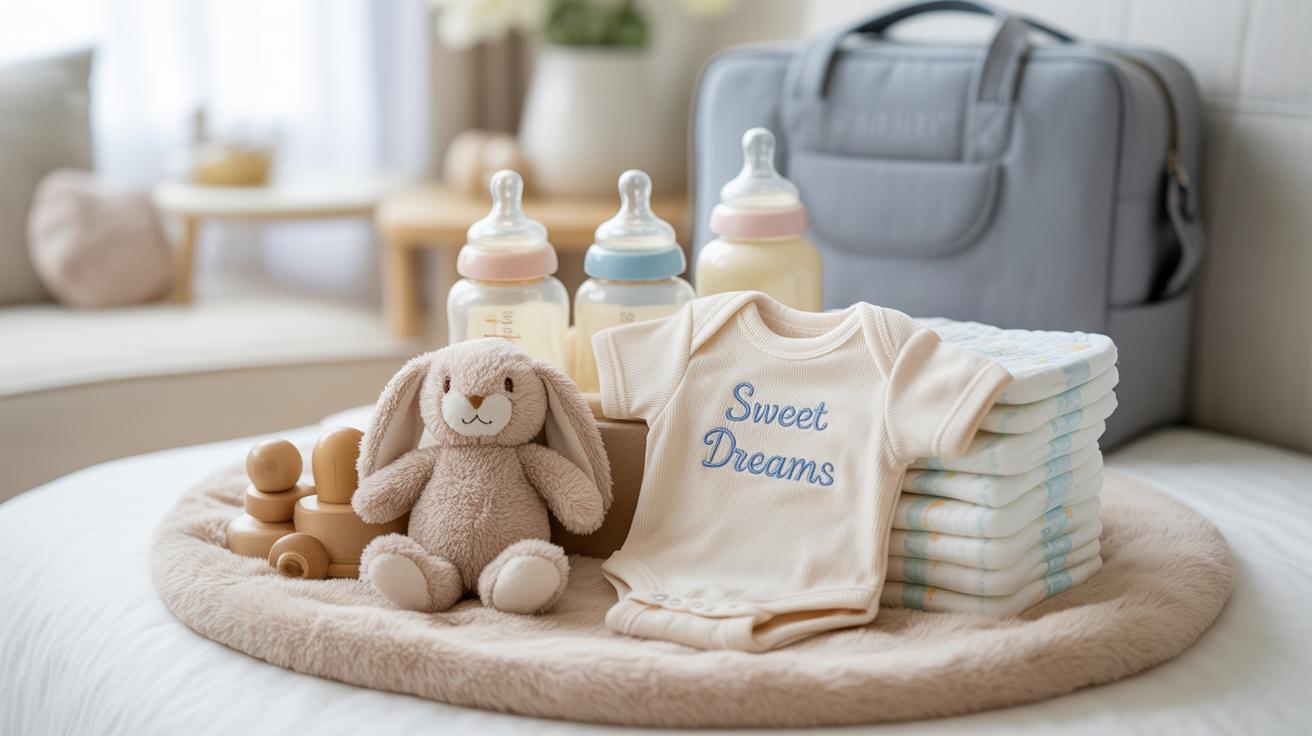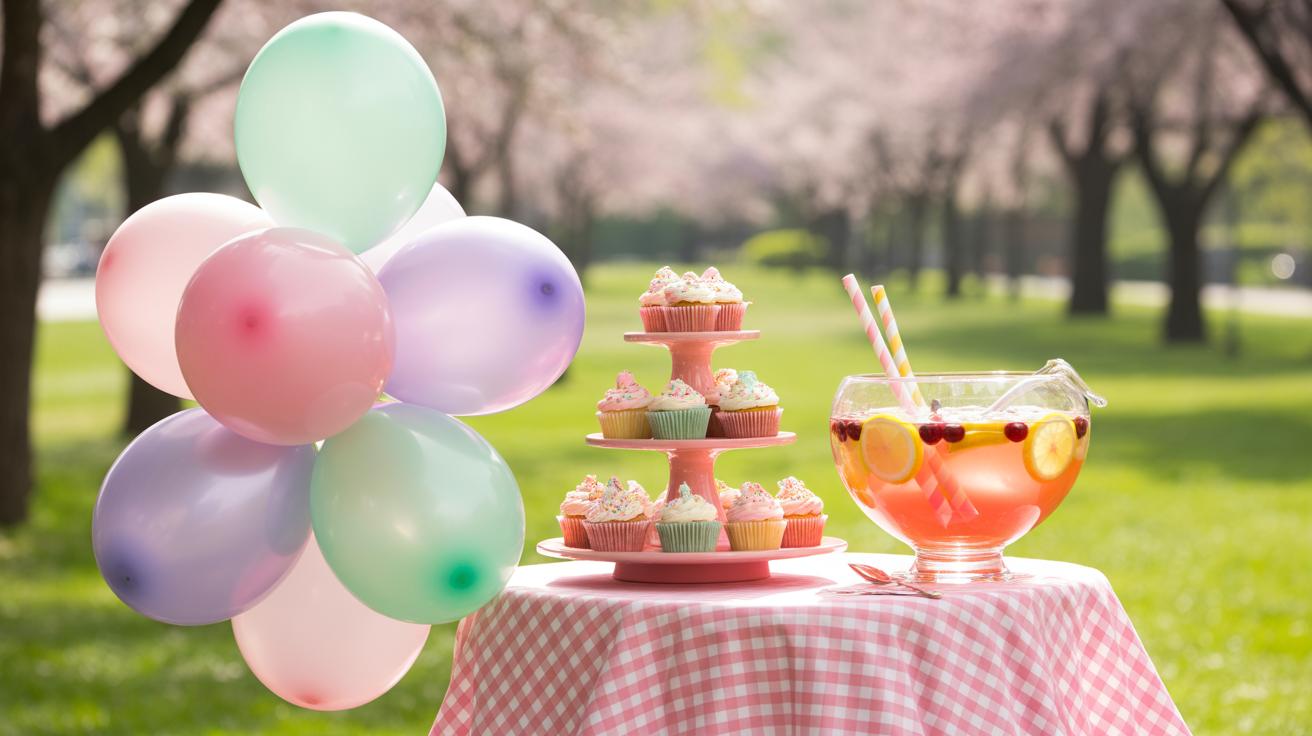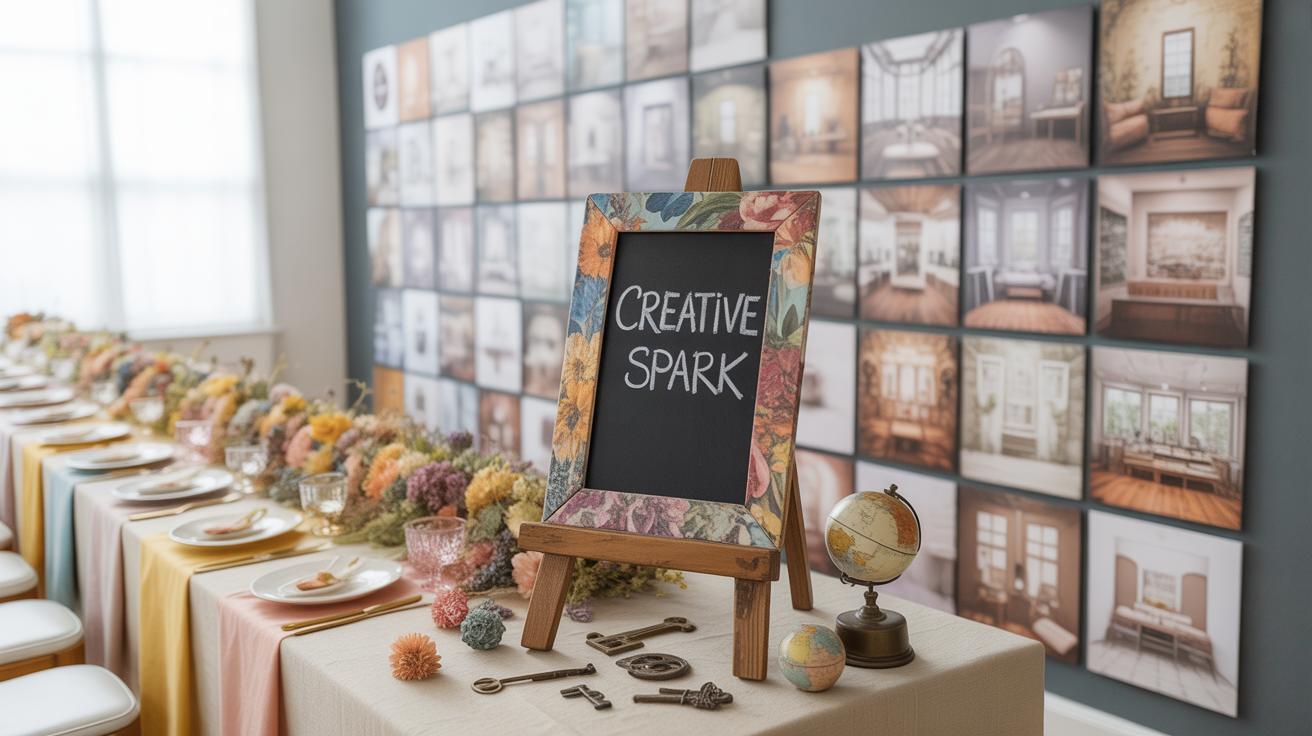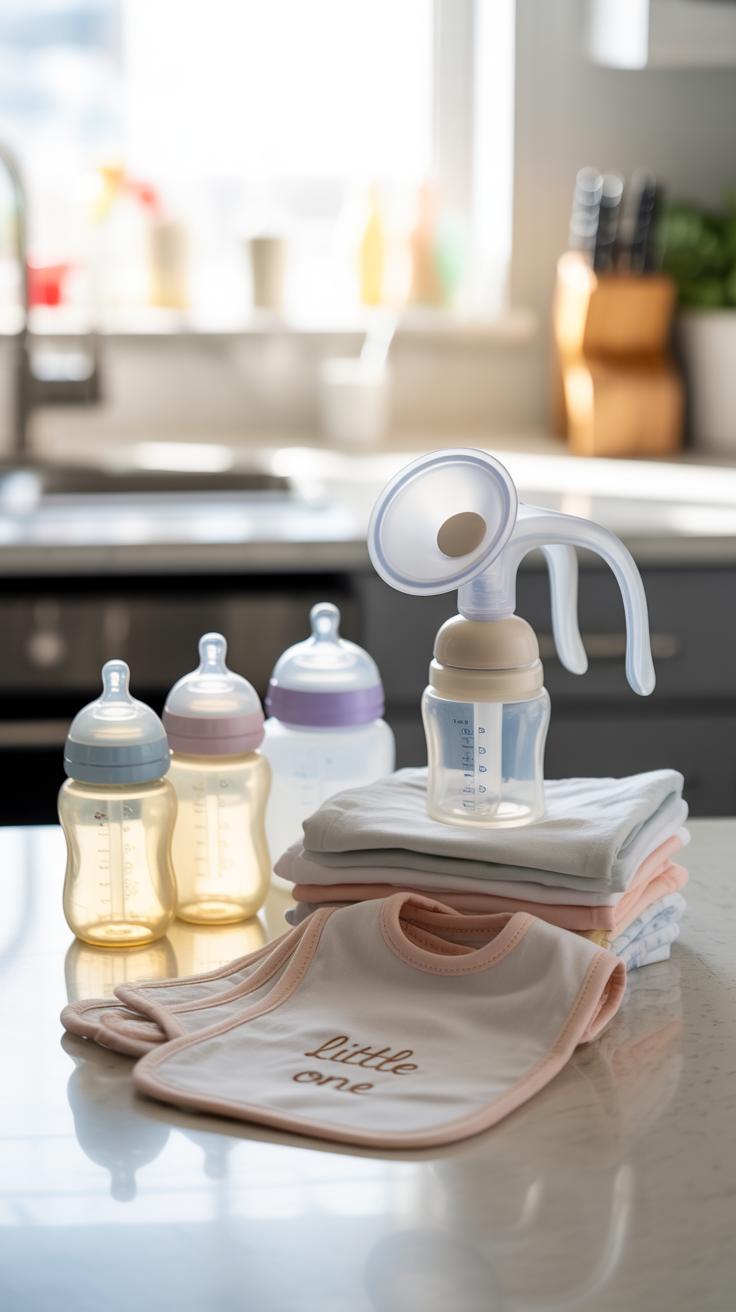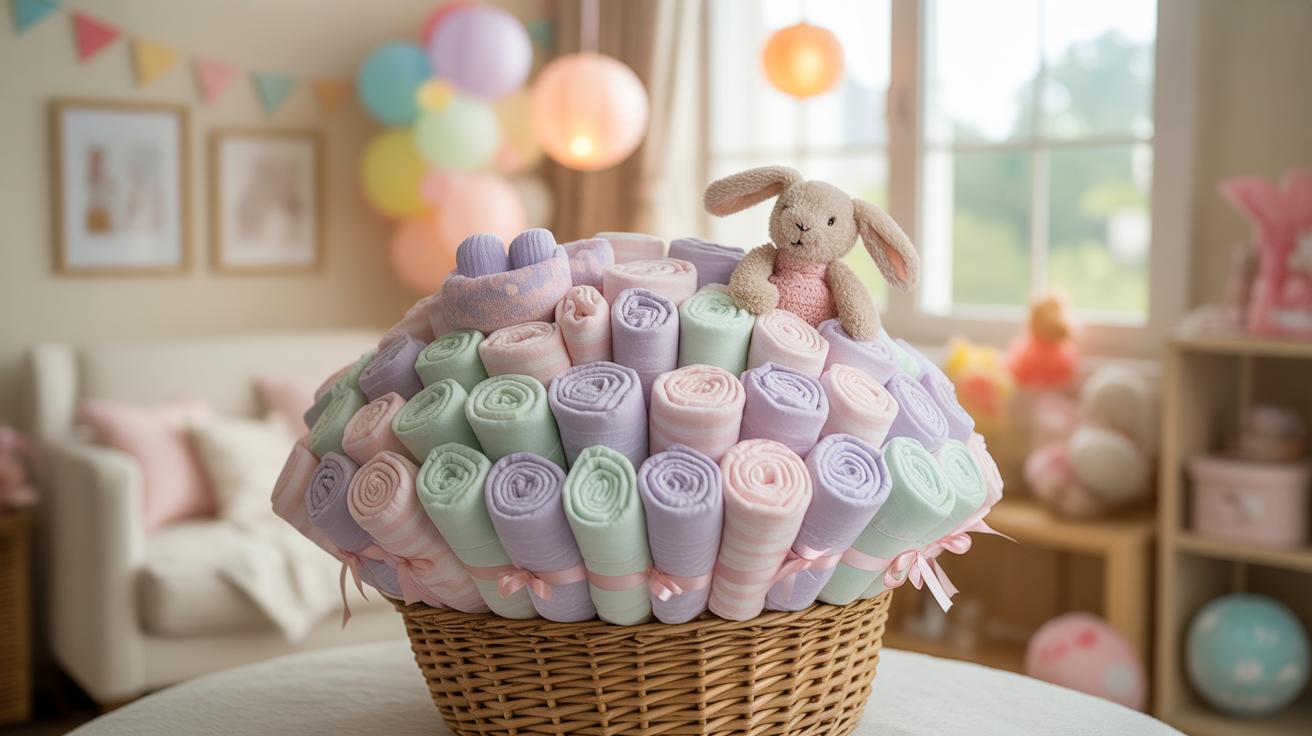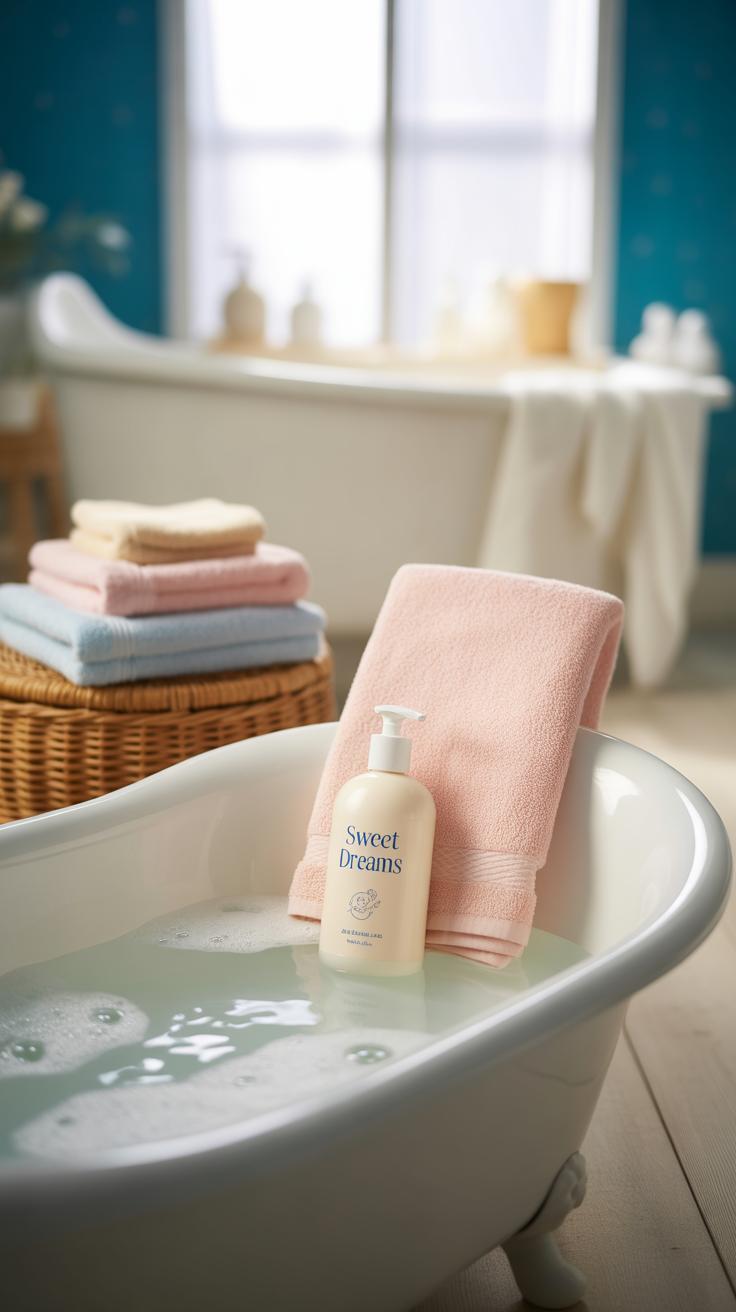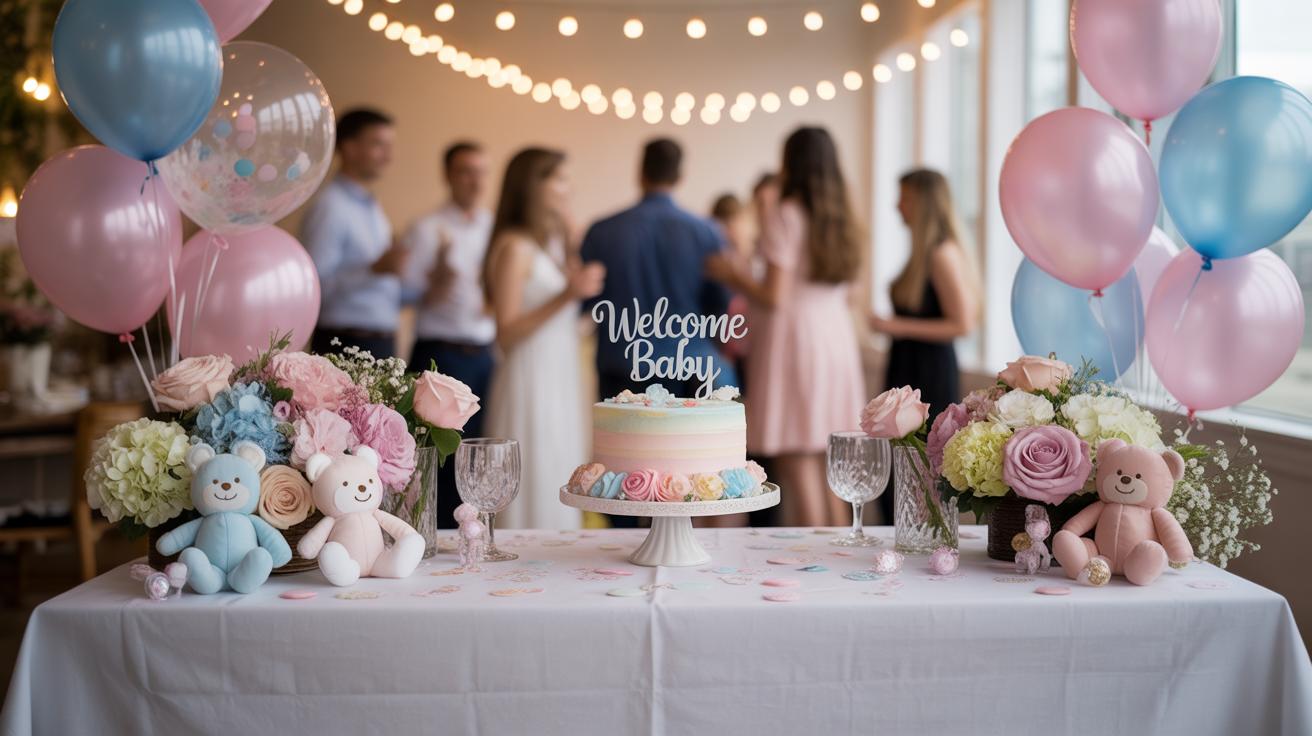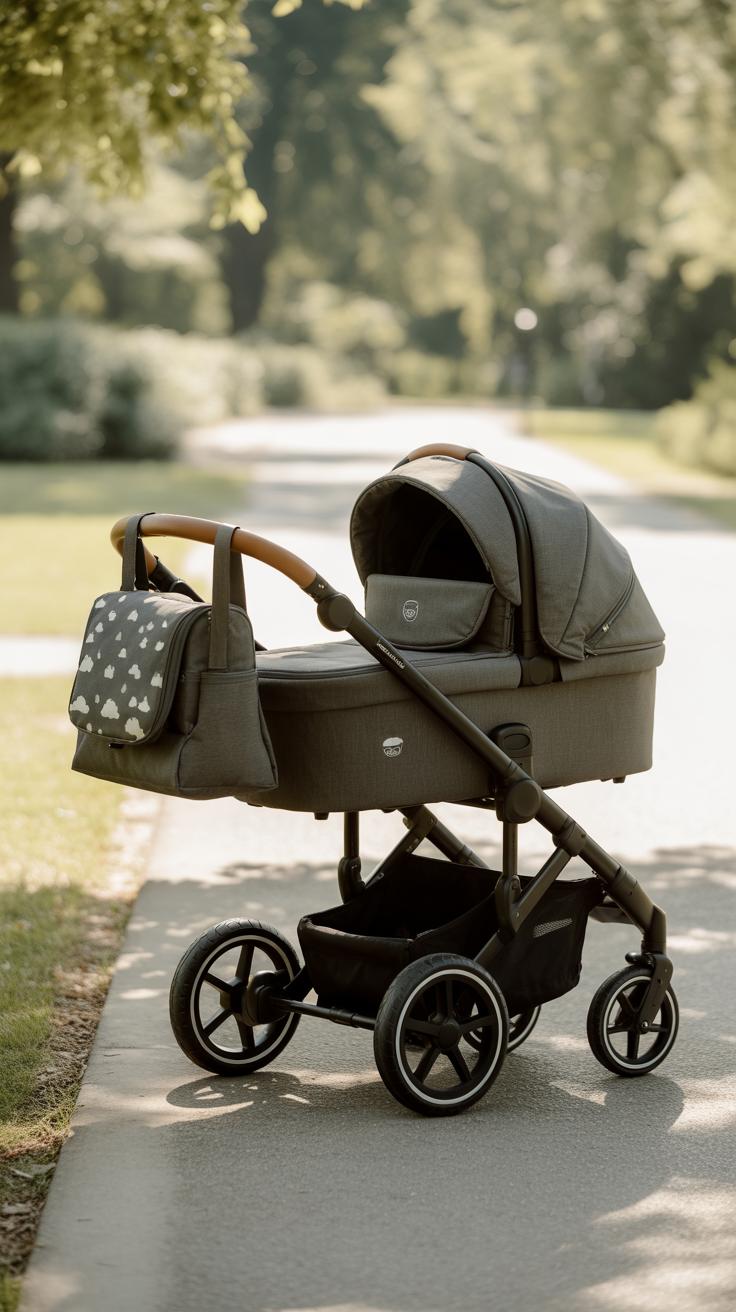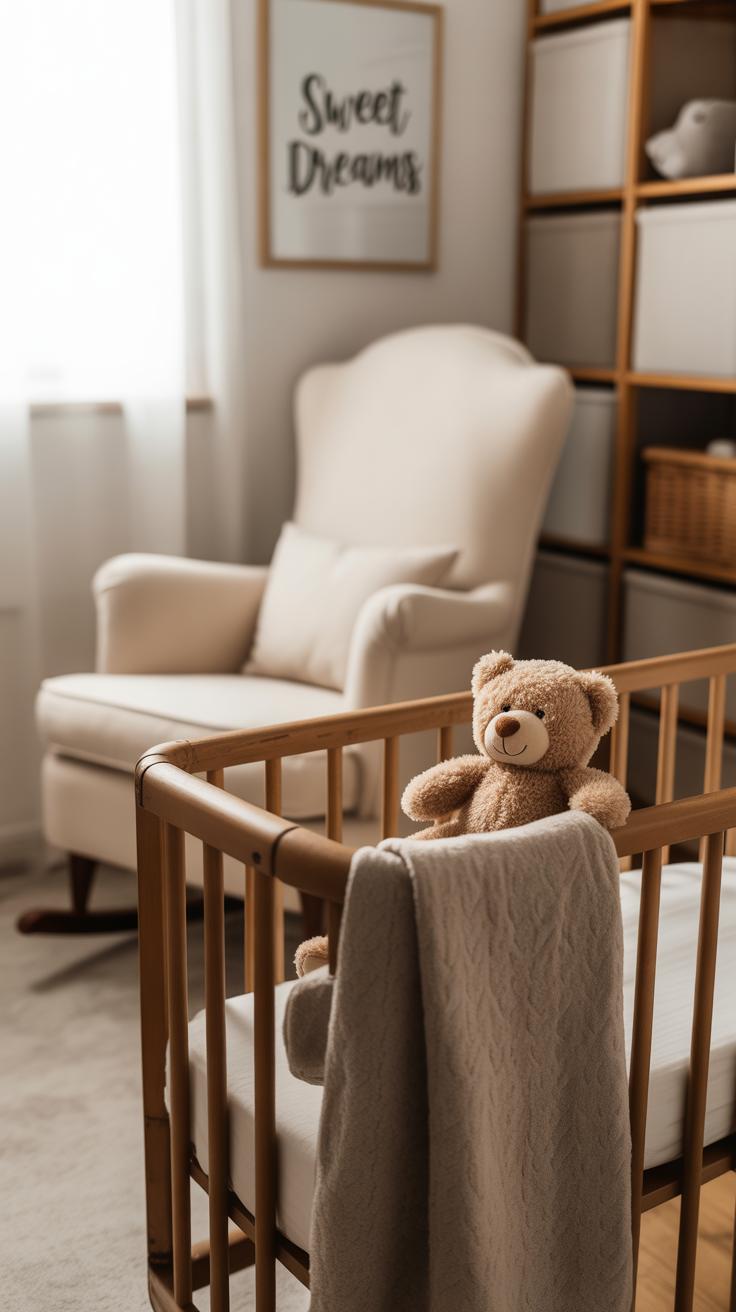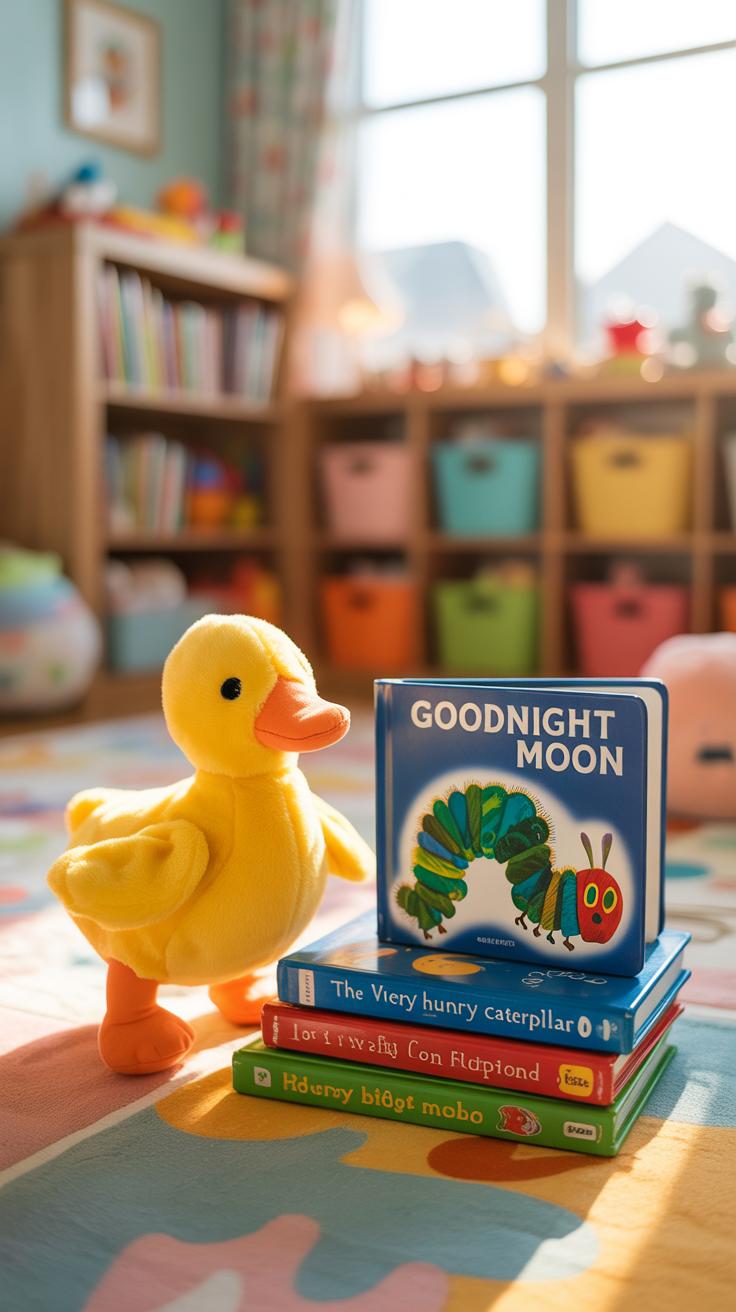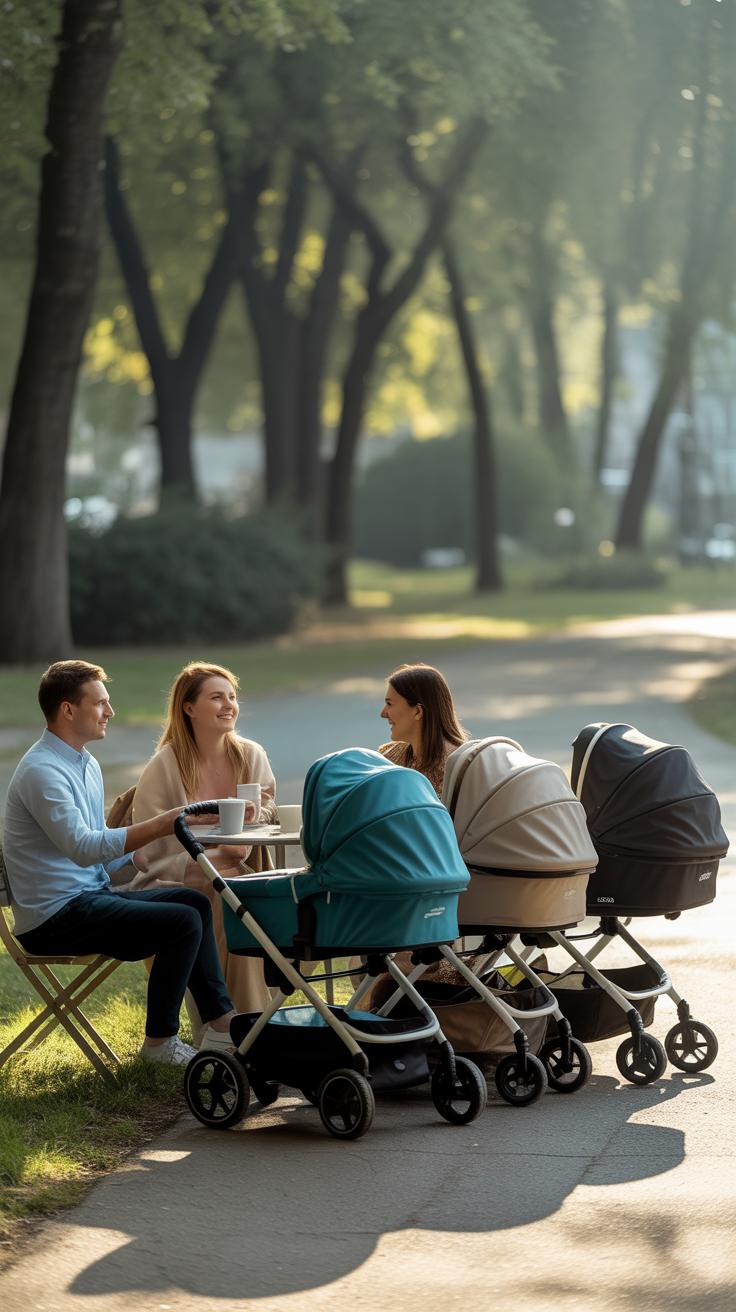Introduction
Welcoming a new baby into your family brings joy and a fair share of planning. Knowing which baby essentials to prepare helps you give your newborn a safe and comfortable environment. From gentle care items to helpful tools, the right products can ease your daily routine.
This article explores the top baby essentials every new parent needs. You will learn about key items for feeding, sleeping, and hygiene. Each chapter provides detailed guidance to ensure you are ready for your baby’s arrival. Whether you are expecting or need a checklist, these essentials cover your baby’s early needs smoothly.
Choosing Safe and Comfortable Clothing
When picking out clothes for your baby, safety and comfort should top the list. Babies have sensitive skin that can react to rough fabrics or tight seams, so look for soft, breathable materials. Cotton often works best—it’s gentle, easy to wash, and tends to hold up well even after many laundry cycles. I remember buying a few synthetic outfits that felt nice at first but quickly lost their shape and irritation wasn’t far behind.
Consider how easy it is to dress your baby, too. Outfits with wide neck openings, snap buttons, or zippers at the front can make changing less stressful—both for you and the little one. Think about the laundry cycle, too: simple pieces that dry quickly and don’t require delicate handling can be lifesavers on busy days.
Selecting the Right Fabrics
Not all fabrics are created equal when it comes to baby clothes. Cotton is often recommended because it’s breathable, soft, and less likely to cause irritation. Organic cotton is even better if you want to limit exposure to chemicals, though it’s sometimes pricier and not always easy to find. Sometimes blends with a bit of spandex add stretch, but too much can reduce breathability. The trick is balancing softness with durability.
Some parents swear by bamboo fabric for its natural antibacterial properties, while others find that certain synthetics trap heat and cause rashes. You’ll likely need to test a few types to see what your baby tolerates best—what works for one newborn might be different for another.
Dressing for Weather Changes
Layers are your best friend when weather fluctuates. A simple onesie paired with a sweater or jacket lets you adjust based on temperature. In cooler months, think about footed pajamas and hats; warmer days call for short sleeves and lighter fabrics.
It’s tempting to overdress a baby because you worry about chills, but babies can overheat just as fast. I’ve learned that checking their neck or back to gauge warmth works better than relying on how bundled they look. Keep a lightweight blanket handy—it’s flexible and less likely to cause discomfort than too many thick layers.
Also, prioritize easy on and off. Weather means more frequent changes—in and out of coats or protective layers. Clothes that slip on nicely or feature snaps along the legs make diaper changes less of a hassle, especially when you’re outside.
Feeding Essentials for Newborns
Feeding your baby can feel overwhelming at first, but having the right tools helps a lot. You’ll want a few basic items, like bottles, a breast pump if you’re breastfeeding, and something to keep everything clean—usually a sterilizer. Feeding chairs are often overlooked but can make a big difference in comfort for both you and your baby.
Breast pumps come in various styles, from manual to electric. Some moms find manual pumps handy when they’re just starting out, while electric pumps save time but can be noisy. Personally, I thought I’d hate the noise, but it ended up being manageable. Don’t forget nursing pads to avoid leaks and nipple cream to soothe any discomfort; those little things can make breastfeeding less stressful.
If you’re leaning towards bottle feeding, you’ll need bottles with different nipple flows, depending on your baby’s age and feeding speed. Formula can be complicated—not just which brand but how to prepare it safely. Cleaning equipment, like brushes and sterilizers, keep bottles hygienic, which is crucial. You might think rinsing with hot water is enough, but sterilizing often provides extra peace of mind.
Feeding chairs sometimes get skipped because you might feed anywhere, but having a spot that supports good posture can trickle down into how relaxed your baby (and you) feel during each feeding. Perhaps one of those chairs with adjustable heights or reclining options would suit your space better.
Creating a Safe Sleep Environment
Choosing the Right Crib and Mattress
The crib stands as the centerpiece of your baby’s sleep space, so picking one isn’t just about style. Safety rules mean the slats must be close enough together—no more than 2 3/8 inches apart—to prevent your baby’s head from slipping through. Corner posts should be low or non-existent to avoid clothing getting caught. And you might want to double-check that the crib meets current standards set by groups like the CPSC.
The mattress needs attention too. It should fit snugly inside the crib frame with no gaps where baby could get stuck. Firmness matters because soft mattresses increase the risk of suffocation. Some parents worry that too-firm means uncomfortable, but babies actually prefer firm surfaces. If you’re unsure, visit a store and press on the mattress. It should give very little under pressure.
Sleepwear and Bedding Tips
When it comes to what your baby wears to sleep, sleep sacks are a favorite for many. They replace loose blankets that could cover the baby’s face, making the crib safer. Pick designs with proper armholes and adjustable neck openings to avoid constriction. Also, layering underneath depends on room temperature; a onesie under the sack might be enough in a cool room.
Avoid pillows, bumpers, and thick quilts inside the crib. They don’t add comfort, only risk. Instead, focus on clothing that keeps baby warm without overheating. Cotton is usually a safe bet for breathability. And observe your baby’s cues. If they seem restless or sweat, try a lighter sleep sack or fewer layers. Finding the right balance is a bit trial and error, honestly.
Diapering Essentials and Tips
When it comes to diapering, having the right supplies nearby makes life so much easier. The basics include diapers, wipes, creams, and a well-organized changing station. Stock plenty of diapers—you’ll be surprised how quickly they add up. Wipes are a must; some parents swear by fragrance-free varieties to avoid irritating sensitive skin. Diaper creams can soothe redness and prevent rash, so keep a gentle one handy. And the changing station? It’s more than just a surface—it’s about convenience. Having everything within reach can turn diaper changes from stressful to manageable.
Choosing Between Cloth and Disposable Diapers
Deciding between cloth and disposable diapers can feel like a big choice—and maybe it is, but the right answer varies for every family. Disposable diapers are convenient, especially when out and about or during busy days. They absorb well and don’t require washing, but they do create more waste. Cloth diapers, on the other hand, can save money over time and are more environmentally friendly. They do require washing and more prep, which not everyone has the time or energy for. Some parents mix both, using disposables for travels and cloth at home. Really, it comes down to lifestyle, budget, and what feels manageable.
Maintaining Freshness and Comfort
Keeping your baby’s diaper area clean is key to comfort and preventing rashes. Gentle wipes or a damp cloth work well to clean without irritating. Let the area dry completely before putting on a fresh diaper—moisture traps can cause irritation. Diaper creams aren’t just for rashes; applying a thin layer as a preventive can protect delicate skin. Watch for signs of redness or discomfort—it might mean you need to try a different brand or adjust the frequency of changes. I remember once getting caught off-guard by a rash that appeared almost overnight; switching wipes and cream helped clear it up quickly.
Bathing and Hygiene Needs
When it comes to bathing your baby, a few essentials make the routine easier and safer. A small baby tub fits in most sinks or bathtubs and keeps your newborn secure during bath time. Soft, absorbent towels, preferably with a hood, help keep your baby warm right after the bath.
Choosing the right soap and shampoo is trickier than it seems. Look for products labeled gentle or formulated for babies—they usually avoid harsh chemicals that could irritate sensitive skin. Sometimes, you may find that a simple rinse with water works just as well, especially in the first few weeks.
Nail care is often overlooked but really matters. Babies’ nails grow fast and can scratch their face without notice. A baby nail clipper or file designed for tiny fingers makes trimming safer and less stressful for both of you. And don’t forget skin moisturizers formulated for infants—dry patches and eczema can show up suddenly, and a little prevention helps.
Safe Bathing Practices
Bathing a newborn safely means staying focused—you should never leave your baby alone, even for a second. Fill the tub with just a few inches of warm water, about 100°F (37-38°C). Testing the temperature with your elbow or a bath thermometer can avoid accidental burns or chills.
Start with a sponge bath until the baby’s umbilical stump falls off. After that, a gentle wash with mild soap and warm water is enough. Don’t feel pressured to wash your newborn every day. Most parents find that bathing 2-3 times a week works fine, preserving the natural oils of their skin.
Nail and Skin Care
Trimming your baby’s nails might make your heart race a little—it’s a bit nerve-wracking at first, but getting into a routine helps. Many find clipping nails right after a bath easiest because they’re softer then. If you hesitate, a fine emery board can work well too.
Baby skin can dry out quickly. You might wonder when to start moisturizing. Some parents begin almost immediately, while others wait for signs of dryness or irritation. Using a gentle, fragrance-free lotion or oil can soothe the skin without causing irritation.
Have you noticed how sensitive babies’ skin can be? Sometimes what works one day doesn’t the next. That’s why watching for reactions and adjusting care routines feels necessary—even if it means a bit of trial and error.
Using Baby Carriers and Strollers
When you’re out with your baby, mobility and comfort matter a lot. Baby carriers and strollers help you get around but in very different ways. Carriers keep your little one close to you, which some parents find comforting, especially during the early months. Strollers, on the other hand, offer a bit more freedom to move without physical strain—but choosing the right one isn’t always straightforward.
Choosing the Right Baby Carrier
There are several types of baby carriers, each with its quirks. Wraps, slings, structured carriers—they all support your baby differently. For example, wraps give a snug, cozy hold but require some learning to tie properly. Structured carriers often feature buckles and adjustable straps, which can be easier for quick outings. Consider your daily routine: if you’re often in tight spaces or want hands-free mobility, a sling or wrap might work better. But if you’ll be carrying your baby for long periods, a structured carrier with good back support could save your shoulders. It’s a bit of trial and error, honestly.
Stroller Features to Consider
Newborns need strollers that fully recline or have attachments for car seats to keep them safe and comfy. Look for models with solid suspension and good brakes—these little details make a big difference when navigating uneven sidewalks or crowds. Some strollers fold easily for storage, which might not seem critical now, but trust me, you’ll appreciate it later. Also, think about weight and size. Too heavy, and you’ll dread lifting it in and out of the car. Too small, and it won’t last beyond a few months. What about adjustable handles? They’re a subtle help if you want comfort while pushing and sharing the load with a partner.
Health and Safety Products
When it comes to keeping your baby healthy and safe, a few key products make a big difference. A reliable thermometer is a must-have. Digital thermometers are quick and easy, providing accurate readings within seconds—because when your baby feels warm, you want to act fast. Some parents prefer ear thermometers for convenience, though they can be a bit tricky to use correctly. It’s worth trying out what works best for your situation.
Baby monitors come in various types, each offering unique ways to keep an eye or ear on your little one. Audio-only monitors are straightforward and affordable but don’t show you much beyond sounds. Video monitors let you see your baby, which can feel reassuring when they’re in another room. Some modern monitors connect to your smartphone, but they might raise questions about privacy or connectivity issues. Personally, I’ve found that even a simple audio monitor can ease those early jitters—sometimes just hearing your baby breathe is enough.
Your first aid kit should be prepared with your baby’s needs in mind. Essentials include baby-safe antiseptic wipes, adhesive bandages, a nasal aspirator, and a digital thermometer. It might sound overwhelming at first, but having these ready helps you stay calm when minor bumps or sniffles happen. Learning some basic infant first aid, like how to clear a blocked nose or treat a mild fever, can make those moments less stressful. You don’t have to be a pro—just comfortable enough to handle what comes your way.
Setting Up a Nursery
When setting up a nursery, striking a balance between safety and functionality can be tricky. Your baby will spend a lot of time here, so every detail counts. Start with choosing the right furniture—think beyond just looks. A sturdy crib with adjustable mattress heights lets you adapt as your little one grows. Changing tables that include built-in storage keep diapers, wipes, and creams within easy reach, reducing errands during those late-night changes.
Space can be tight, so plan the layout carefully. Position the crib away from windows and cords to avoid hazards. Keep pathways clear. If you have limited room, consider a dresser that doubles as a changing station. This can free up floor space without sacrificing storage. Speaking of storage, use bins or shelves to keep toys, clothes, and essentials organized—clutter can overwhelm you and the baby.
The nursery’s atmosphere plays a huge role, too. Soft, muted wall colors create a calm environment—think gentle blues, greens, or even warm neutrals. Harsh lighting can disrupt sleep patterns, so dimmable lights or a small nightlight work wonders during feeds or diaper changes. Decorations should be simple, maybe a few framed prints or a mobile, avoiding anything too busy that might overstimulate. You want the room to feel like a quiet refuge.
Entertainment and Stimulation
Your baby’s world grows fast, and what they play with matters a lot for their development. Toys and items that encourage exploration and curiosity don’t just keep your little one busy—they actually help build senses and skills that matter long term.
Age-Appropriate Toys
For newborns, simple is best. Toys that offer varied textures, sounds, and colors help with sensory development without overwhelming them. Think about:
- Soft, fabric rattles that make gentle noises when shaken.
- Black-and-white or high-contrast board books to engage developing eyesight.
- Teething rings that provide both comfort and something to grasp.
- Mobiles with slow-moving shapes to captivate attention during tummy time.
These items spark your baby’s senses and begin fine-tuning motor skills. I remember how my niece’s eyes would widen at the sight of a colorful, crinkly toy—sometimes it was the simplest thing that held her gaze longest.
Safe Play Areas
Babies need space to move but it has to be secure. A safe play area can be anything from a well-padded corner of a room to a playpen, where your baby can stretch, roll, and experiment without constant worry.
Consider using soft mats with raised edges or play gyms that offer both comfort and stimulation. Keep small objects, cords, and anything breakable well out of reach. It’s tempting to let your baby explore everything, but safety here is non-negotiable.
Create boundaries that feel open but protected. Your baby should feel free to discover, while you can relax—this balance can be tricky but is worth aiming for. Does your baby respond better when there’s a bit more room to roam, or do they seem more focused within a cozy nook? Sometimes you might have to try both.
Building a Support System
Becoming a new parent can feel overwhelming, even when you’ve prepared as much as possible. That’s why having a support system matters—a lot. Family and friends can help in small, practical ways, like bringing meals or babysitting for a bit. But support isn’t only about hands-on help. Sometimes, just knowing someone’s there to listen makes a big difference.
Don’t hesitate to reach out for advice from professionals too. Pediatricians, lactation consultants, or counselors can offer guidance that you might not find elsewhere. Asking for help doesn’t mean you’re failing; it often means you’re doing the responsible thing.
Seeking Help When Needed
It’s easy to feel like you should handle everything on your own—but you really don’t have to. If you’re anxious, tired, or confused, talk to someone. Maybe it’s a partner, a sibling, or a neighbor you trust. Or perhaps a healthcare provider who can answer questions about feeding, sleep, or behavior. You might be surprised how willing people are to help, if you just ask.
Keep in mind, advice can vary a lot. Sometimes it feels like conflicting opinions or too much information. That’s normal. Just pick what seems right based on your situation. Your instincts matter too—even if you’re still figuring them out.
Joining Parent Groups
Connecting with other parents can lighten the load in unexpected ways. You can share stories, swap tips, or just vent when things feel tough. Whether you join a neighborhood group, a class at a local center, or an online forum, you’ll likely find others who understand what you’re going through.
These groups often bring a mix of perspectives—some might be more experienced, others new like you. That mix can be helpful. And you’ll probably discover that your challenges aren’t as unique as they sometimes seem. Often, just belonging to a community makes early parenthood feel less lonely.
Conclusions
Having the right baby essentials on hand supports you in caring for your newborn with confidence. From the basics like diapers and clothing to helpful gear like carriers and monitors, each item plays a role in your baby’s well-being. Preparing these essentials means you can focus more on bonding and less on last-minute runs to the store.
Use this guide as your foundation. Tailor your list to what fits your lifestyle and baby’s needs. Your readiness will grow day by day, making parenting a rewarding experience for both you and your child.

